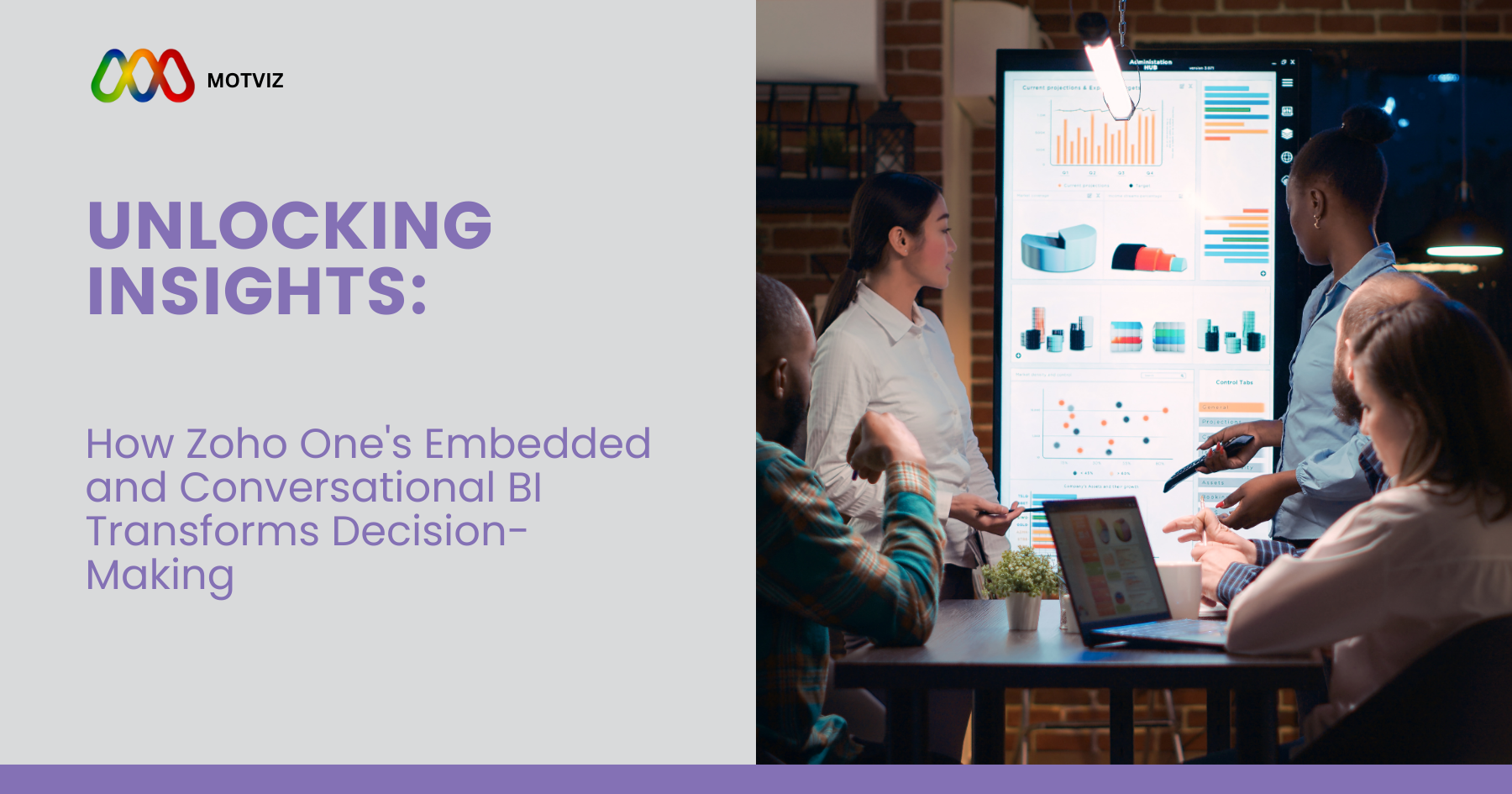
Unlocking Insights: How Zoho One’s Embedded and Conversational BI Transforms Decision-Making
Introduction
In today’s business environment, where data is becoming ubiquitous, making effective decisions in a timely manner has never been more critical. Zoho One is fully integrated set of business applications that harnesses the power of Business Intelligence (BI) and embeds the functionality into its modules and conversational AI. Zoho One creates what has traditionally been the drawback of BI–it creates a separation between the data analysis component and the actionable insights that can be derived from data to form decisions–and removes it from the experience of the user. Users can interact with their data directly as part of their daily working experience, where it as part of every action that they take. As data becomes part of the users day-to-day work experience, so too does decision-making, which allows users to better understand data and make effective decisions using data. In addition, Zoho One users can ask BI questions of the data in conversational language–such as using a chat interface or a smart assistant–meaning that insights are available to everyone, not just those who are analytics specialists.
Features of Zoho One’s Embedded and Conversational BI
- Embedded Analytics:
- Seamless Integration: BI capabilities are natively embedded into Zoho One’s apps and as such a user can access their reports and dashboards during the normal workflow of the app without switching contexts. Consider Zoho CRM. A sales team can continue to focus on their day to day activity and can view real time dashboards on lead conversion rates or their sales performance, all inside the CRM framework.
- Contextual Awareness: Analytics and therefore insights, are delivered in the relevant context of the business, so insights become more actionable more quickly. For example, a marketing team using Zoho Campaigns can see the results of an email campaign right inside an overview of the campaign itself.
- Self-service Capabilities: Users can relatively easily create their own custom reports and dashboards using self-serve interfaces that use a simple drag-and-drop interaction with the underlying data provided by the embedded BI modules, reducing reliance on dedicated analysts or IT teams.
- Conversational BI (with Zia):
- Natural Language Query: Zoho’s AI assistant, Zia, allows users to ask questions about data using natural language, such as “How were sales in the North region last quarter?”. Zia processes the inquiry and returns relevant visualizations or reports.
- Automated Insights: Zia is also able to automatically identify trends, anomalies, and key driving factors in the data and present insights to users without them having to frame specific questions.
- Voice and Text: Users can either use voice commands or text input to engage Zia, enabling a flexible approach in how they interact with information.
- Accessibility: Conversational BI minimizes the touchpoint for analysis so data insights are accessible to users in any role or skill category.
Conclusion
Zoho One’s embedded and conversational BI features will take great strides towards democratizing data-driven decision-making. By integrating analytics directly into the applications users already work in, and by providing a natural language interface for requesting answers and exploring insights, Zoho One allows teams throughout an organization to easily unearth or discover data value. This change allows them to make more informed actions, work more efficiently, and ultimately drive better business results. Organizations will be able to use embedded analytics for contextual awareness and conversational BI for fast answers. Zoho One has established itself as a key enabler of organizations looking to robustly leverage their data investments to create a culture of data-informed decisions.




